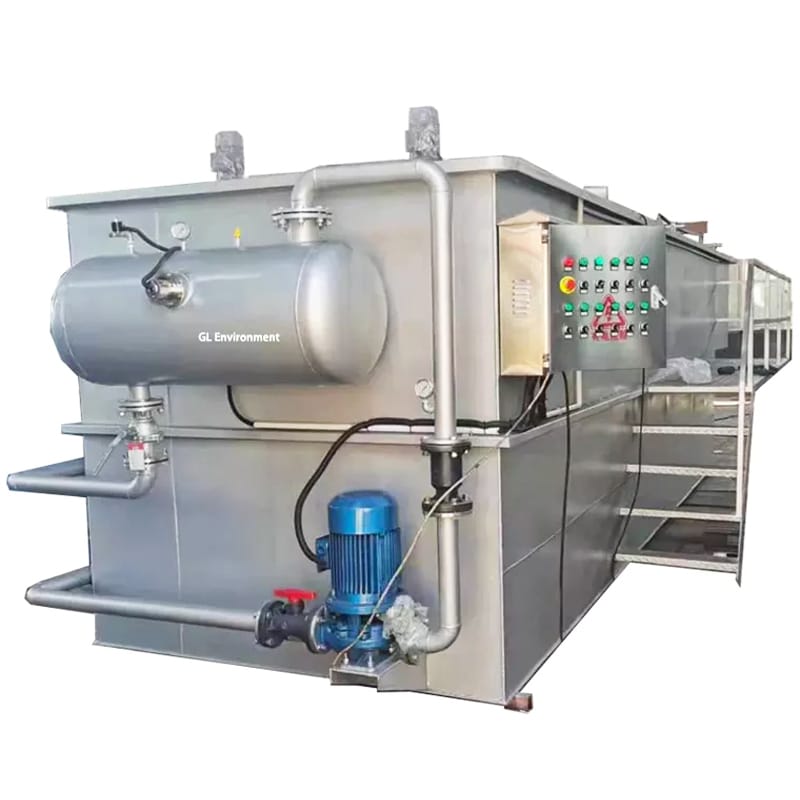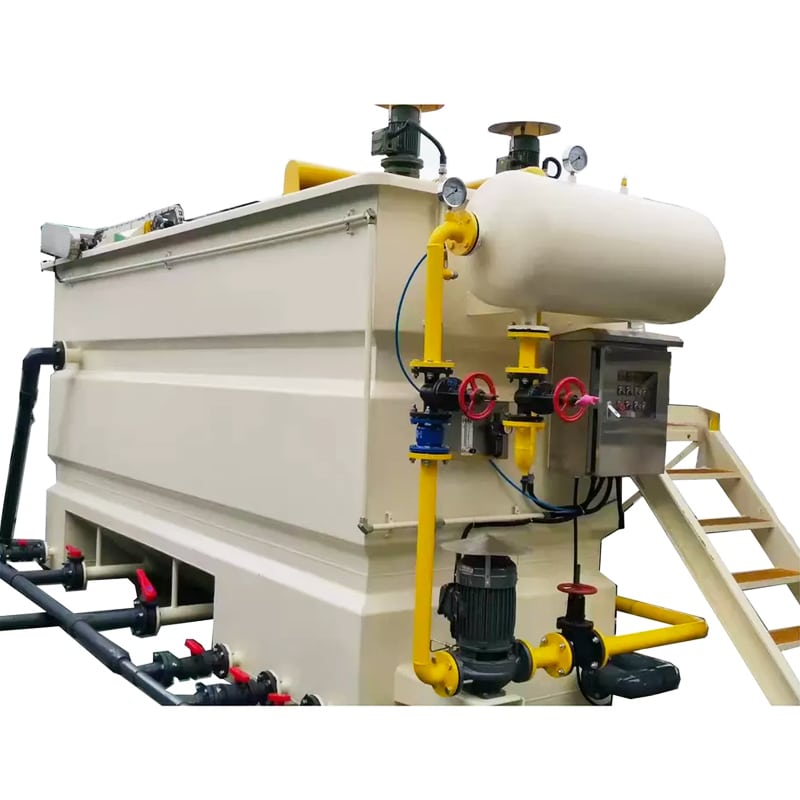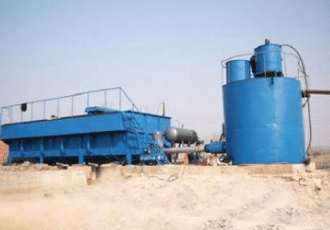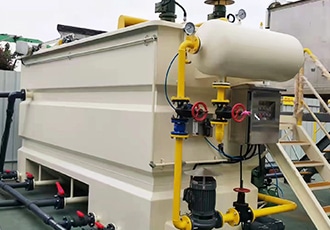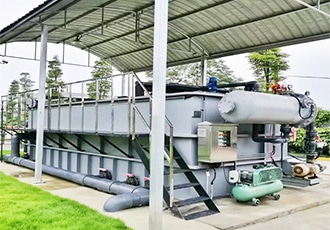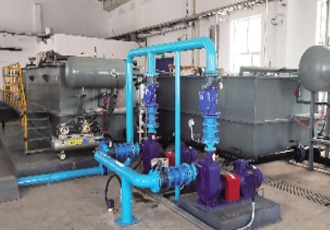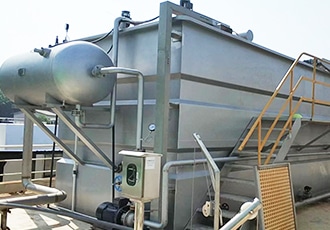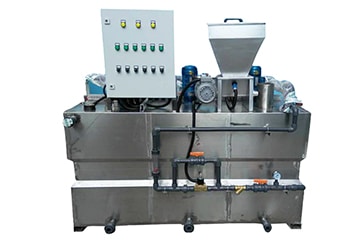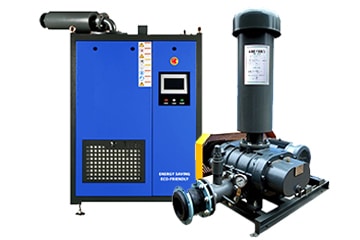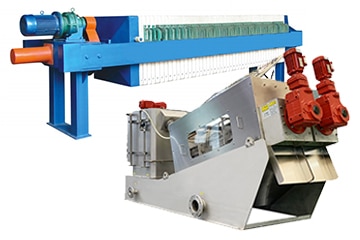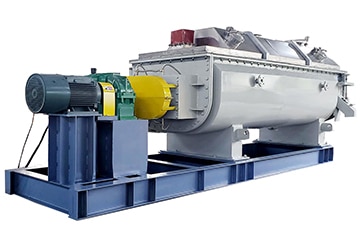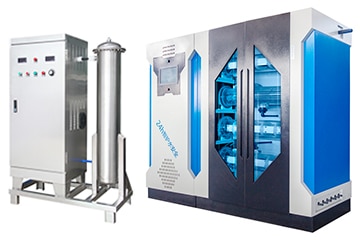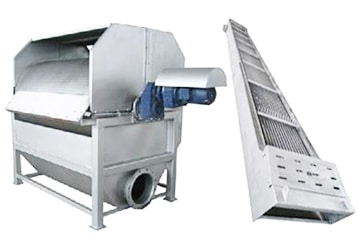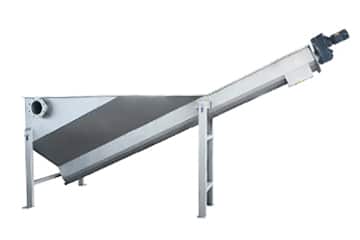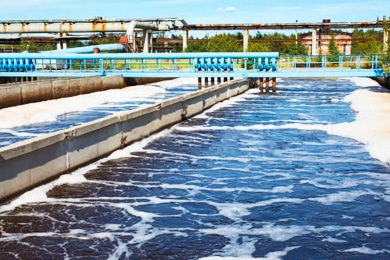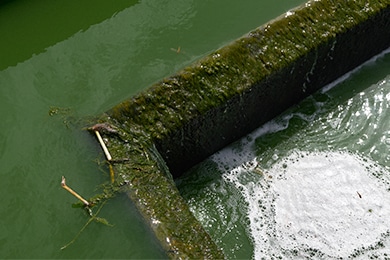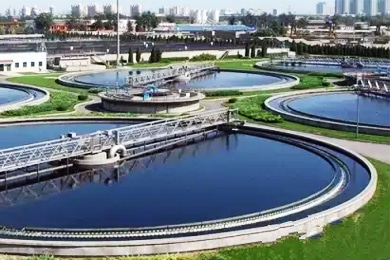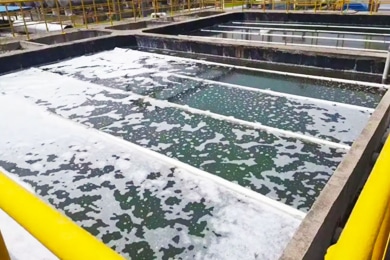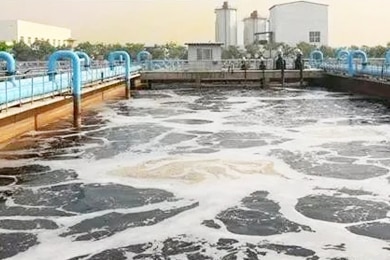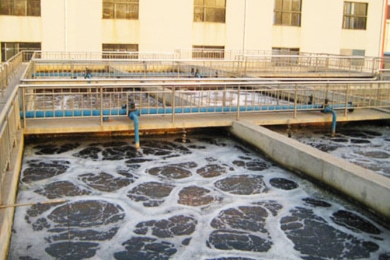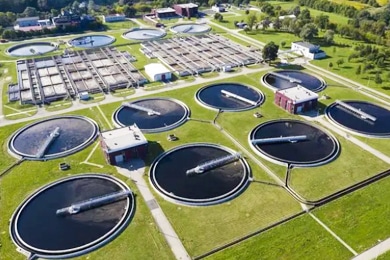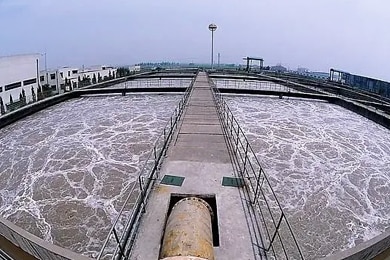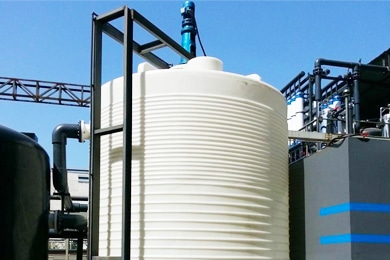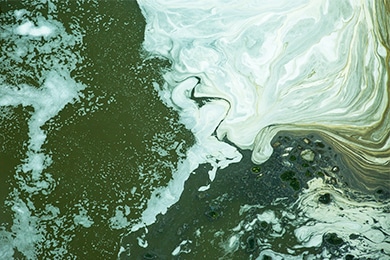Dissolved Air Flotation (DAF) System
DAF (dissolved air flotation) systems are versatile and efficient chemical precipitation and physical separation systems designed to clarify wastewater for subsequent treatment and reuse. The equipment separates total suspended solids (TSS), biochemical oxygen demand (BOD), fats and oils from the water.
The high concentration of sludge produced is removed to the internal hopper (sludge hopper) for further treatment via a surface skimmer. The treated wastewater is continuously discharged at multiple points within the DAF system and discharged to the effluent chamber via a piping weir.
What is Dissolved Air Flotation(DAF)?
Dissolved air flotation (DAF) is a water clarification process that uses air to remove suspended material from the surface of treated water. DAF works by dissolving air under pressure and then releasing millions of tiny air bubbles into the water at atmospheric pressure. This process allows the dissolved air bubbles to attach to the suspended matter in the water, causing it to float to the surface and be skimmed off. Coagulants/flocculants are added to the process to induce aggregation of suspended solids and colloidal particles.
DAF systems are commonly used to clarify wastewater from food processing plants, oil refineries, oil and gas operations, pharmaceutical plants, chemical plants, paper mills and municipal water plants, among others.
Features
- The dissolved air pump absorbs water while inhaling,pressurized and mixed in the pump,high gas-liquid dissolution efficiency, and fine air bubbles s30um.
- The dissolved air pump can replace the complex system composed of circulating pump,air compressor,dissolved air tank, ejector and release head.
- Low pressure operation,the dissolved gas efficiency is as high as 99%,and the release rate is as high as 99%.
- The efficient adsorption of microbubbles and suspended particles improves the removal effect of SS.
- The dissolution efficiency of dissolved air and water is 80-100%,which is 3 times higher than that of traditional dissolved air flotation.
- The pressure-capacity curve is flat,easy to realize automatic control,easy to operate,easy to maintain,and low noise.
Main advantages
- Versus conventional clarification — higher sludge solids, smaller footprint, and more reliable effluent quality
- Reduced footprint — compared to any comparable system with similar flow rates/load levels
- High Efficiency — Utilizes angled settling tubes for increased surface area and faster separation.
- Air flushing — for automatic pipe cleaning.
- Premium Treated Water — for the most efficient separation of sludge from effluent. This also allows decanting of more free water prior to sludge removal. Increases reuse rates while reducing compliance costs.
- Sludge grating/thickening — prevents sludge migration and thickens it for improved reuse.
Process description
The dissolved air flotation system integrates water inlet, flocculation, separation, water collection,and water effluent, which is similar to traditional air flotation equipment. It is equipped with a steady flow chamber and a dissolved gas release chamber, which makes the treatment performance more stable and the effect is better.
Stabilization chamber: The raw water reacted by the folded plate has a high flow rate. If it directly contacts with the dissolved air,it will dissipate tiny bubbles, which will affect the effect of the bubbles adhering to the floc, thereby reducing the efficiency of air flotation treatment. The kinetic energy of the turbulent raw water is consumed and enters the dissolved gas water release chamber at a uniform speed, thus effectively ensuring the removal effect.
Dissolved gas release chamber: The dissolved gas release chamber and the separation chamber are in one tank. Separated in the middle, the dissolved air water and the flocculated raw water adhere here, slowly rise, and enter the air flotation separation chamber, which ensures the contact space and time between the flocculation block and the tiny bubbles,and makes the release rate of the dissolved air water reach 80-100%.
Dissolved air system: For air flotation equipment,the dissolved air system is like the “heart” of the air flotation equipment,and it is also the main component of the air flotation equipment.At this stage,gas and water are sucked together at the inlet of the pump,and are mixed into dissolved gas and water by the impeller shearing and pressure,and the gas-liquid two phases are fully mixed and saturated. The gas content of the whole dissolved gas system is 10%,and the solubility of the gas is 100%, so that the micro-bubbles are evenly distributed when the gas is dispersed, and the average bubble diameter is less than 30um. The dissolved air system is an improvement and technological innovation of traditional air flotation, which improves the air flotation separation efficiency and greatly reduces equipment production and operating costs
Slag scraper: The operation mode and speed of the slag scraper directly affect the water quality of the flotation water and the solid content of the sludge. The system adopts a rotary slag scraper, which can continuously and evenly scrape the scum into the scum tank, reducing the phenomenon of the scum colliding with each other; In addition, the height-adjustable scraper can better adapt to various operating conditions and reduce the sludge moisture content.
Control system: All well-known electrical components are used to ensure the long-term and effective operation of the equipment. Supporting equipment Air flotation reagents and dosing equipment are also important factors to ensure the treatment effect. We can provide matching dosing equipment and optimized combination reagents according to the needs of users.
DAF system design
Designing the best DAF system for your application requires site visits, testing and pilot studies to determine the real needs of the plant. A typical DAF system includes coarse filtration, physicochemical treatment, and dewatering of the sludge prior to discharge or reuse.
Coarse filtration removes lint, scale, sand and other large objects from the waste stream via hydrocyclones or vibrating screens. A hydrocyclone system is a centrifugal separation device designed to separate high density solids, such as grit, from the waste stream. A vibrating screen is a multi-stage filter that accommodates different flow rates and separates fine and coarse particles. Both are used prior to the DAF.
Accurate pH control is critical for any wastewater treatment system. Discharge pH limits vary from region to region and the consequences of discharging beyond these limits are often fines and environmental damage. Automatic addition of acid or caustic soda is preferred in pH control, which consists of a treatment tank with a mixer, an in-tank pH sensor, in-tank level control, metering pumps for acid and caustic soda injection, an automatic drain valve or pump comprising the effluent and a control panel.
After the wastewater stream passes through rough filtration, pH control and the DAF, the sludge generated from the DAF is skimmed off and moved to sludge dewatering. A filter press or screw press can dewater the liquid waste residue for final disposal of the dry solid waste. This solid waste can be disposed of separately to a landfill, resulting in a cleaner wastewater discharge. Sludge dewatering equipment greatly reduces waste treatment and disposal transportation costs.
KUOSI is a manufacturer and supplier of DAF dissolved air flotation system in China, supplying types of daf system products at factory prices. Contact us for a quote on the right dissolved air flotation unit for your site application.
Industry applications
- Papermaking wastewater treatment and fiber recycling
- Paint wastewater treatment
- Printing and dyeing wastewater treatment
- Food waste water treatment
- Electroplating waste water
- Separation of biologically treated mud and water
- Heavy metal ions
- Low temperature and low turbidity surface water treatment
- Oily wastewater treatment
- Algae-containing surface water treatment
- Tannery wastewater treatment
- Chemical wastewater treatment

